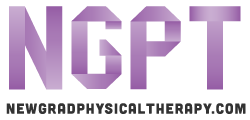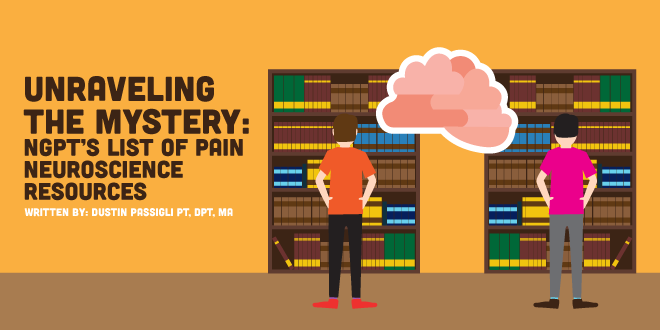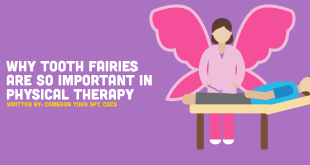Pain neuroscience is an incredibly imporant topic for physical therapists. Pain continues to be one of the most common reasons that bring individuals to their healthcare provider. As a result, pain has a significant societal as well as economic impact.
Statistics show that in the United States, an estimated 100 million individuals suffer from chronic pain which is costing the country billions of dollars 1.
However, research that focuses on pain and its sources continues to be underfunded with researchers only receiving 1% of the National Institutes of Health (NIH) budget 2. It also seems that much of the medications and other treatments do not work enough to improve symptoms in individuals with chronic pain 1.Individuals are inundated with opioids, NSAIDS, antidepressants, and anti-epileptics. All of which have shown limited efficacy in the chronic pain population causing dependency, various physical and psychological side effects 1,2.
The biggest question that is pressed to the public and those who spend everyday treating pain is “What do we do now?”.
We are at a critical threshold where there need to be individuals willing to create bold programs and treatment paradigms in order to conquer chronic pain.
Fortunately, with the advent of brain imaging, the science of pain has evolved tremendously over the past 5 years 3. Research has shown that chronic pain may alter cognition and emotion, leading to increased fear, anxiety, or depression. Experiments performed by eminent neuroscience researcher and physiotherapist, Lorimer Moseley, have been able to show that manipulating the psychological context of a nociceptive stimuli can produce distinct changes to pain.
As Lorimer Moseley shows, physical therapy plays a vital role in helping patients manage and overcome chronic pain. We are on the front lines for acting on changes in the pain neuroscience research and to start incorporating some of the principles that are elucidated. One of the concepts shows the importance physical therapists should place on educating the patient about how brain and central nervous system hypersensitivity contribute to their chronic pain. Furthermore, PT’s should encourage patients to never give up and teach that pain does not have to be a way of life.
This is why here at NGPT we want to provide the new grad community with a list of pain neuroscience resources that are geared towards treating/understanding pain.
Pain neuroscience: In the beginning…
To understand the present state of pain research and to predict where the research may go, it is important for physical therapists to understand past ground breaking pain research. Melzack and Wall introduced their “gate control” theory of pain in 1965 with their landmark article in Science called “Pain Mechanisms: A New Theory”. This proposed theory revolutionized how clinicians and researchers approach pain research and provided a theory of pain that most accurately accounts for the physical and psychological aspects of pain perception. 4
In the modern era, a collection of physicians and other leaders in pain research provide practical guidance on the full range of today’s pharmacologic, interventional, electrostimulative, physiotherapeutic, and psychological management options in Wall & Melzack’s Textbook of Pain ($255 on amazon vs $389 on Elsevier). This resource provides the New Grad Physical Therapist with a multidisciplinary approach to conceptualizing/understanding and treating pain. As clinicians, we need to understand the patient/client’s previous pain behavior and/or attitude towards self-efficacy.
Patient behaviors and attitudes may include visits to allopathic physicians who specialize in pain management, it might be alternative medicine providers or engaging in meditative techniques. Furthermore, behaviors may include changes in nutrition, supplementation, and/or changing how the individual sleeps. Nevertheless, our role should be to establish a congenial cohesive unit with patient/clients to assist them through their pain behaviors toward more “well behaviors”.5 This bond that is made should not be one of underlying dominance or subversive tactics to force change but allowing the patient to be the guide and helping to develop a patient’s self-efficacy in form and function.
Pain Neuroscience Resources by Physical Therapists
Explain Pain
by Dr. David Butler and Dr. G. Lorimer Moseley
This resource provides an evidence-based understanding of chronic pain and reads in a rather easily digestible format for clinicians, students, and even patients. The resource uses everyday language in order to convey the complexities of the central nervous system and how it relates to chronic pain. This provides the New Grad Physical Therapist a look into novel techniques to help guide their patients onto the road to recovery.
The Sensitive Nervous System
by David S. Butler
This illustrative guide focuses in on current concepts in neuroscience research and how it relates to the peripheral nervous system and neurodynamics. The Sensitive Nervous System calls for skilled combined physical and educational contributions to the management of acute and chronic pain states. It offers a “big picture” approach using best evidence from basic sciences and outcomes data, with plenty of space for individual clinical expertise and wisdom.
Painful Yarns
by G. Lorimer Moseley
A very novel look at addressing pain with the use of vivid imagery and anecdotes to further elucidate the importance of understanding pain. Touted as a wonderful pre-read to Dr. Butler and Lorimer Moseley’s Explain Pain book.
Therapeutic Neuroscience Education: Teaching Patient about Pain; A Clinicians Guide
by Adriaan Louw and Emilio Puentedura
This exceptional resource created by renowned pain researchers and physical therapists provides the physicaltherapist/clinician with a structure by which to facilitate a patient/clients understanding of their pain. Mounting evidence has shown the effectiveness of treatment is limited by the fears, anxieties, and trepidations of the client/patient.6 They continue to think, “What’s going on?”, “Why do I feel this way?”, and “Why is this happening to me?” While in the past there was a medieval push for physical therapists to refer out to a psychological evaluation, this is a time in which our role in treatment and education is paramount. There is inherent risk in pushing off someones complaints. This may lead to maladaptive behavior and relying on a professional for help instead of themselves. Lastly, this medium ushers in a collective movement to merge both pain research and clinical practice to educate individuals on the brain to body/body to brain connection.
Why do I hurt? , Your Nerves Are Having Back Surgery, Your Headache Isn’t All In Your Head, and various other self guides for patients
all by Adriaan Louw
These resources are geared solely for the patient to understand their pain. Why do I hurt? provides the patient with a comprehensive but succinct look at the neuroscience of pain and how to regain control of their lives. Your Headache Isn’t All in Your Head and Your Nerves Are Having Back Surgery use specific conditions to open up a dialogue within the patient as to their treatment options. These resources are helpful for the clinician to provide even more resources for the patient to solidify gains made in clinic.
Mechanisms and Management of Pain for the Physical Therapist
Kathleen A. Sluka
A comprehensive textbook that outlines the basics of neurobiology and pain science, assessment of pain, basics of physical therapy practice management, and various current methods of treating pain in the physical therapy clinic.
General Pain Neuroscience Resources
Pain: The Science of Suffering
by Patrick Wall
This book refocuses the conversation of pain from a woefully limited mechanistic model into a more profound and complex discussion of pain in regards to behavior, culture, and society.
The Challenge of Pain
by Ronald Melzack & Patrick Wall
These resources provide a more general outlook on pain neuroscience and the way our different cultural and societal mores, individuals beliefs and experiences, gender differences, aging, and stress patterns play a role in pain.
Pain: Its Anatomy, Physiology, and Treatment
by Aage R. Moller
This book provides a multidisciplinary, comprehensive, and broad coverage of the anatomy and physiology of pain along with treatment modalities used across a plethora of disciplines. Sections include detailed descriptions of pain neuroscience, pain and cognition, and the importance of neuroplasticity in modern pain treatments. The text also delves deep into the various forms of pain and their manifestations.
The Brain That Changes Itself and The Brains Way of Healing
by Norman Doidge
Both of these non-fiction novels elucidate the development and profound affect neuroplasticity has had not only with chronic pain but also those who suffer from various physical and cognitive disorders. Norman uses hundreds of case studies and bountiful evidence along with detailed interviews and correspondence with various brain experts to create a guide from which the general public can understand the importance of neuroplasticity.
Pain-Related Fear: Exposure-Based Treatment of Chronic Pain
by Johan Vlaeyen, Stephen Morley, & Steven Linton
The basis of this text is to introduce the concept of pain-related fear avoidance and its influence on treating patients/clients with chronic pain. Touted as a handbook for the clinician, researcher, and student; it provides these individuals with detailed treatments of exposure-based techniques for the reduction of pain-related fear and disability in chronic pain.
A Guide to Better Movement: The Science and Practice of Moving With More Skill And Less Pain
by Todd Hargrove
This text combines a mix of elucidating general principles of brain neuroscience, providing illustrated movement lessons for the client, and guiding the client in regards to current brain-body science. Lessons to glean from this text include how an individual can remap their brains for “good” movement. Generally, this text provides the practitioner with a clear and practical look at the emerging science related to the brains role in movement and pain.
Neuroplastic Transformation Workbook
by Michael Moskowitz and Marla Golden
The book is a collection of three things: First, the book includes a number of one page “vignettes” about the neurophysiologic basis of chronic pain and the neuroplastic approach to chronic pain. Second, the book includes several pages of neuroplastic tips. Its easy to characterize these as tasks or strategies that patients with chronic pain may find useful. The emphasis is on various options to try. Third, the book includes several page of quotations from “people taking control of their pain.” Here individuals describe, in very personal terms, how they “talk” or “think” their way to pain relief. For the patient who is beginning to try a neuroplastic approach to pain relief , these short quotations provide a wonderful view of the range of approaches that other patients have discovered or developed to achieve pain relief.
Wired for Healing – Remapping the Brain to Recover from Chronic and Mysterious Illnesses
by Annie Hopper
This resource looks at how the author came from suffering through chronic pain an illness into creating the Dynamic Neural Retraining System Program which is a neuroplasticity-based approach to remap neural pathways in the limbic system. The book also provides little vignettes from stories of other people being able to train their brain to help decrease their chronic pain.
IN SUMMARY
The recent shift in the understanding of pain has many ramifications. Primarily, it changes the way a physical therapist approaches patient care. While many health care professionals used to focus on the treatment of localized tissues, many physical therapists are beginning to use a bio-psycho-social model of pain treatment. In this approach, physical therapists do not solely focus on the tissues of the body, but they also account for psychological and social factors that may be influencing the amount of pain a patient/client experiences 7.
These resources are provided to help engage the New Grad Physical Therapist in remapping their look on how to treat chronic pain. Chronic pain continues to be a public health challenge that requires immediate and constant focus. Physical Therapists can help advance these notions not only in clinical practice but also in the form of cutting-edge research. The source and amount of funding for said research needs to change. This is especially important now that many pharmaceutical companies are bowing out of pain research due to perceived risks 1. The government has to play an important role improving the funneling of money to cutting edge research especially within the realm of physical therapy. Approaching chronic pain as a national emergency would allow for a better future in terms of both treatments for chronic pain, costs to society, and individual well-being. Lastly, establishing a division of pain within the NIH or establishing effective public-private partnerships that help support focused, deliverable, and integrated research enterprises to conquer pain 1.
Please let us know if you have any other suggestions in the comments below:
References
1. Borsook D. A Future Without Chronic Pain: Neuroscience and Clinical Research. Cerebrum: the Dana Forum on Brain Science. 2012:7.
2. Committee on Advancing Pain Research, Care, and Education. Relieving Pain in America: A Blueprint for Transforming Prevention, Care, Education, and Research.Washington, D.C.: Institute of Medicine of the National Academies; 2011.
3. Borsook D, Becerra L, Hargreaves R. Biomarkers for chronic pain and analgesia. Part 2: How, where, and what to look for using functional imaging. Discovery Medicine. 2011;11(58):209–219
4. Melzack R, Wall PD. Pain mechanisms: a new theory. Science. 1965 Nov 19;150(3699):971-9.
5. Zimney K. Pain is about behavior. accessed<http://www.evidenceinmotion.com/blog/2016/03/24/pain-is-about- behavior/> March, 24, 2016. Website.
6. Turk DC, Wilson HD. Fear of Pain as a Prognostic Factor in Chronic Pain: Conceptual Models, Assessment, and Treatment Implications. Current pain and headache reports. 2010;14(2):88-95.
7. Brence J. Physical therapist’s guide to pain. <http://www.moveforwardpt.com/SymptomsConditionsDetail.aspx?cid=e6dabed7-c6d5-4362-8260-9ce807427619> accessed Nov. 2, 2016. website.
 NewGradPhysicalTherapy.com The Largest Online Resource For New Grad Physical Therapists
NewGradPhysicalTherapy.com The Largest Online Resource For New Grad Physical Therapists






